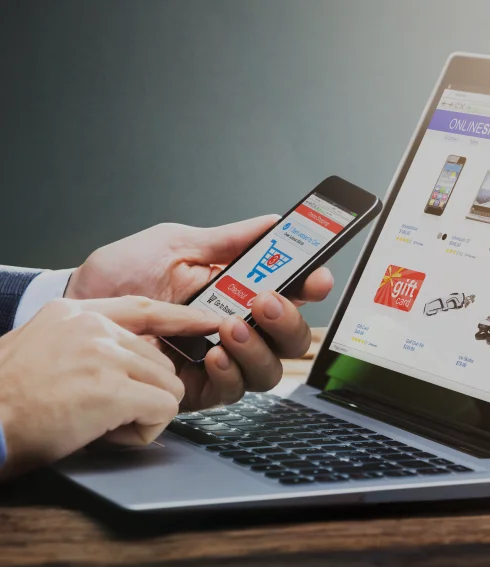Decision-making is one of the most crucial tasks for any organization willing to prosper. Especially when it comes to adopting technological advancement. One of those crucial choices involves evaluating local vs remote clusters for Kubernetes development.
With every technological advancement, there are some pros and cons to consider. The same goes for the case of identifying what, how, and why either local or remote clusters contribute to organizational growth.
Give this article an attentive read. Here, we have explored the advantages and limitations of local and remote clusters for Kubernetes development.
Local Clusters for Development
Local clusters are installed on a personal computer and can be used for development. These clusters create an identical replica of Kubernetes resources, such as pods, services, and deployments.
- Advantages of Local Clusters
The isolated and self-contained computing environment of local Kubernetes development has much to offer. Some of these advantages include:
- Development Network
The development network stands out as a prominent benefit of using local clusters for Kubernetes. It offers the freedom to experiment, test, and refine applications without the risk of affecting broader networks or production environments.
- Accessibility
One of the major advantages of local clusters is the accessibility factor. Since it grants developers immediate and direct access to their computing environments. This means no network latency or connectivity issues. In short, the accessibility of Kubernetes for local development induces productivity and responsiveness.
- No Image Upload
Using a local environment, developers can avoid the need for constant image uploads to remote servers. This is also important for reducing dependencies on external networks to expand the development process.
- Cost Efficiency
Another compelling advantage of clusters in local Kubernetes development is cost-effectiveness. The use of local machines means organizations can control expenses associated with cloud services or external hosting.
Limitations of Local Clusters
Despite all the advantages, the use of local clusters also brings some limitations. They are as follows:
- Scalability
Local clusters often appear with a scalability drawback. The reason is that the resources of an individual machine can constrain the scalability potential. With the expansion of project requirements, the local environment may struggle to accommodate the growing demands for computing storage, power, and network capabilities.
- Laptop Battery Usage
Since local clusters require significant computational power, they consume laptop batteries quickly. This demands frequent recharging cycles. The process disrupts continuous work as well as accelerates battery degradation over time.
- Similarity With Real-World
One more drawback of local clusters is their limited ability to simulate real-world conditions. Remember, these clusters render valuable computational power for various tasks and their inherent constraints. This can be troublesome in fields like scientific research or simulations.
Case Studies
Growth. Enabled.

Sunburst Type To Learn

InGenius Prep

Magento Cloud Migration

Nutrition Detection App
Remote Clusters for Development
Remote clusters for development are essentially similar to local clusters with one significant difference. Instead of running on an individual’s machine, these clusters operate on remote servers or cloud-based platforms.
- Advantages of Remote Clusters
Have a look at what remote clusters offer before finalizing the decision based on local vs. remote clusters for Kubernetes development.
The utilization of remote clusters offers the unique advantage of creating a production-like environment for development and testing purposes. These clusters in cloud environments closely resemble the conditions of a production setup.
- Scalability
With the use of remote clusters comes the reliable element of Cloud scalability. They provide the flexibility to scale computational resources up or down based on demand. Through this dynamic scalability, the applications and services can adapt to varying workloads and handle increased demand without compromising performance.
- Collaboration
Cloud-based remote clusters facilitate the users with the ability to access computing resources virtually from anywhere. This accessibility is highly profitable for collaborative projects. Team members can work smoothly, irrespective of their location.
- Access to External Resources
Remote clusters in local Kubernetes development, therefore, act as a gateway to a broader ecosystem of resources. This quality leverages the vast capabilities offered by cloud services. Plus, it allows developers and organizations to harness additional computing power and specialized services on demand.
- Limitations of Remote Clusters
Have a look at the other side of the coin with these limitations of remote clusters.
- Accessibility
The higher the dependency on internet connectivity, the better the chances of facing critical factors. Such as disruptions or slow connections that may trouble access to the remote computing resources. In these scenarios, when a high-speed internet connection is missing, users may experience latency issues.
- Cost
Cloud-based remote clusters usually involve pay-as-you-go pricing models. In this case, users have to pay based on their resource usage. Although the approach provides cost efficiency for variable workloads, it can turn into a drawback for consistent and high-performance computing needs.
- Latency with Development Tools
Even though the cloud-based clusters offer flexibility and scalability, relying on internet connectivity can result in delays. The lag in interactions with integrated development environments (IDEs), and collaborative tools may disrupt the developer’s workflow.
Choosing the Right Approach
Now, the matter of concern is what the most suitable approach for your organization is. Local vs. remote clusters for Kubernetes development is not a competition. Instead, it demands the best approach for your needs. Consider these factors in this regard:
- Project Scale
The choice between remote and local clusters majorly varies from project to project. In other words, the scale of a project. Local clusters, due to their cost effectiveness, work better with small-scale projects and modest resource demands.
On the contrary, remote clusters, because of their accessibility through the cloud, cater to expansive projects by managing variable workloads efficiently.
- External Dependencies
Projects with minimal external dependencies or those benefiting from Kubernetes cloud consulting services may find remote clusters advantageous. This is due to the ability of cloud-based tools and services that cannot enhance project capabilities.
External dependencies also matter in deciding the cluster selection in other ways. For example, if a project relies heavily on locally hosted databases, APIs, or specialized hardware. Local clusters get the edge with smoother integration and reduced latency.
- Cost
Cost consideration has an undeniable say in determining the cluster architecture. Local clusters may offer initial cost savings. However remote clusters with pay-as-you-go models appear to be attractive for projects with fluctuating resource demands.
Balancing these factors shapes a sensible selection, fulfilling the unique requirements and constraints of each project. However, taking the expert Kubernetes development services route can do this job the right way.

Optimize Your Kubernetes Workflow
Struggling to configure performant, resilient Kubernetes clusters that meet your application needs? Our specialized consultants offer a free architecture review to assess and tailor a solution for your environment.
Where Does Raftt Fit In?
RAFFT, also known as Random Access File Transfer Tool, is a tool designed to transfer large datasets between clusters efficiently. It can become beneficial in managing data movement effectively.
However, this being a versatile tool goes with both the options depending on the use and business objective. Its offerings efficiently provide solutions for data transfer needs, regardless of the physical or virtualized infrastructure.
Summary
This guide presents a thorough comparative analysis of local vs. remote clusters for Kubernetes development, covering positive outcomes and limitations of both remote and local clusters. Choosing between local and remote clusters requires a deep understanding of the factors mentioned above.
The decision should be made in light of the points covered here because striking the right balance ensures that Kubernetes clusters align seamlessly with the specific needs of the relevant project.

























